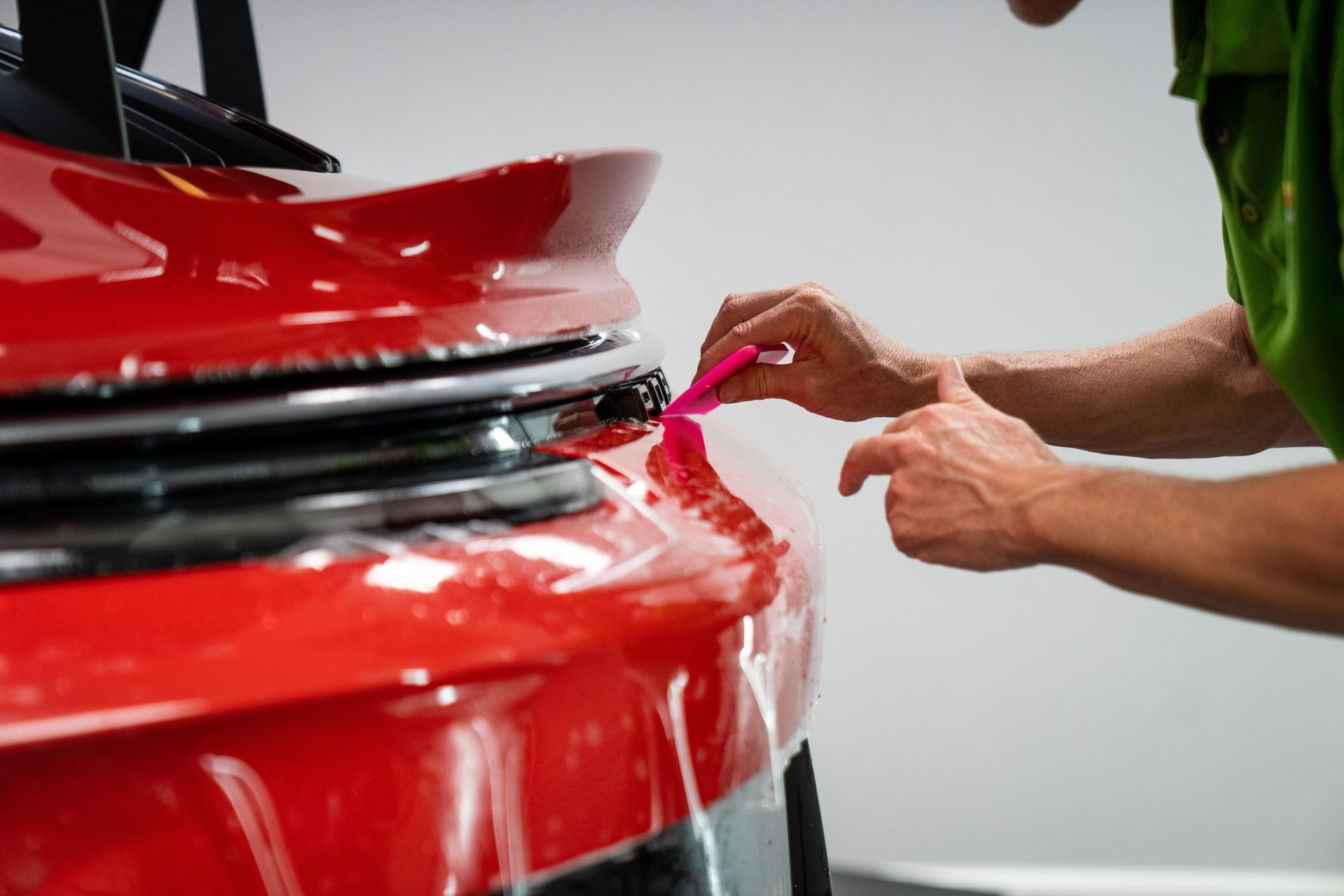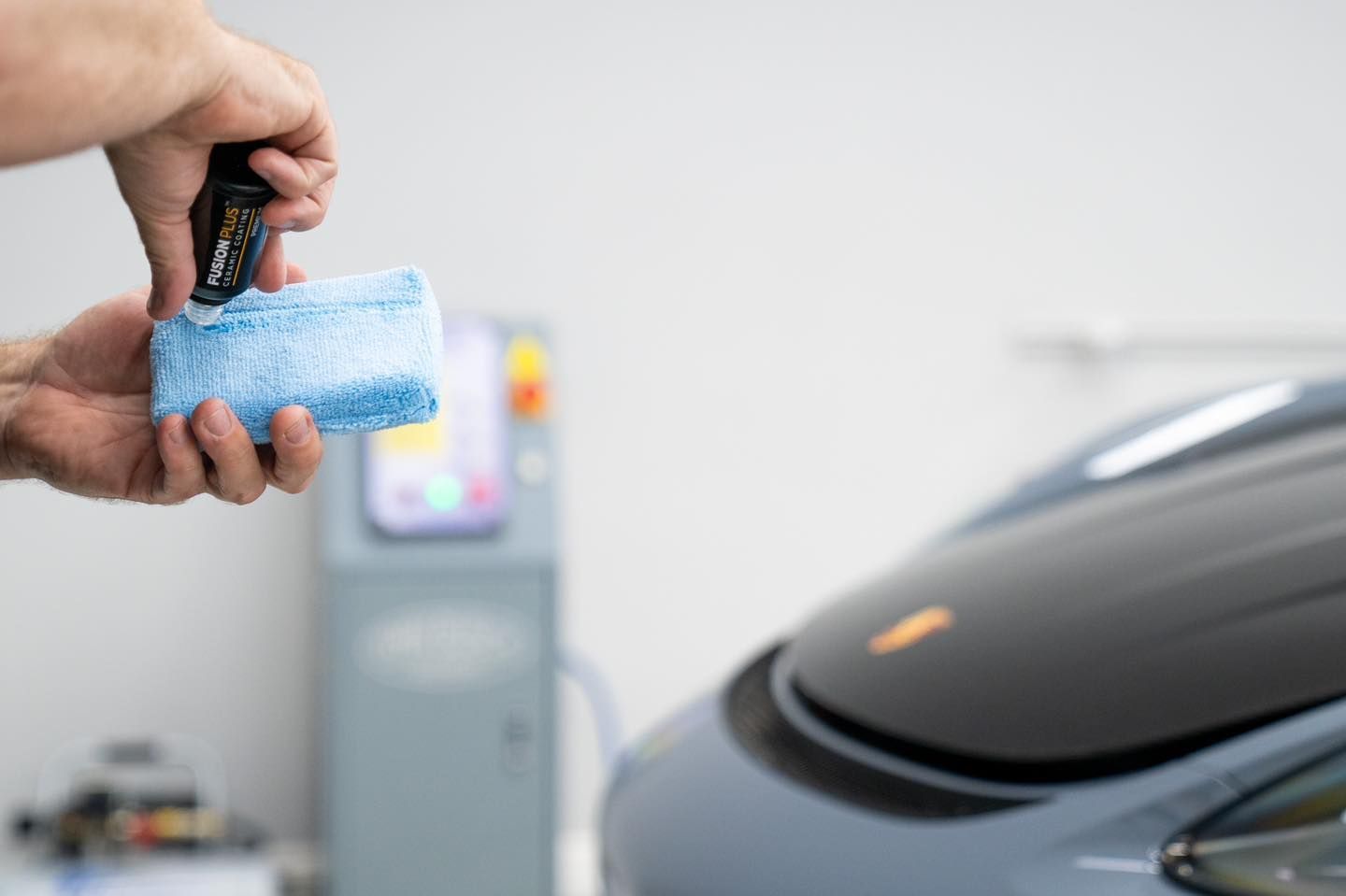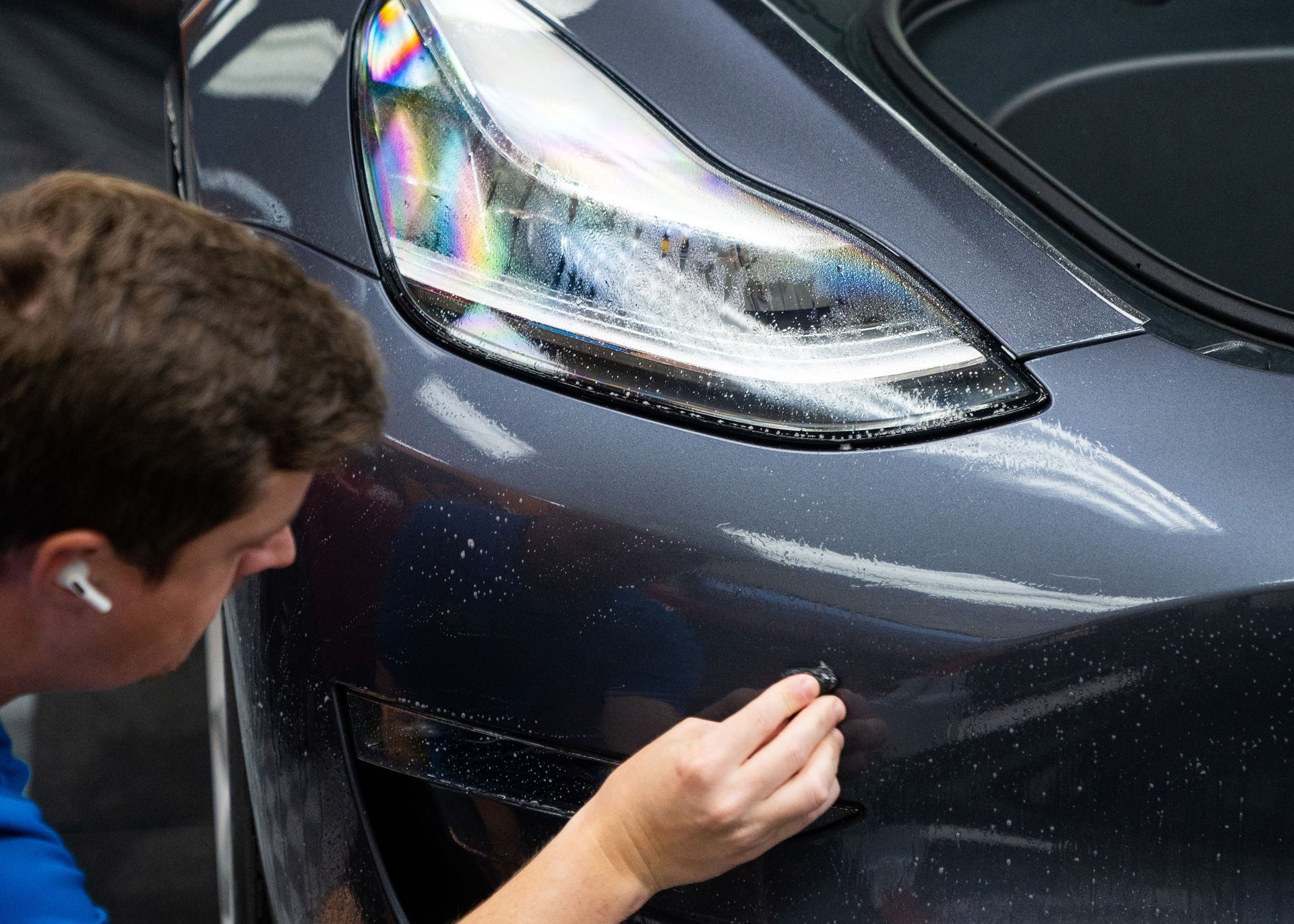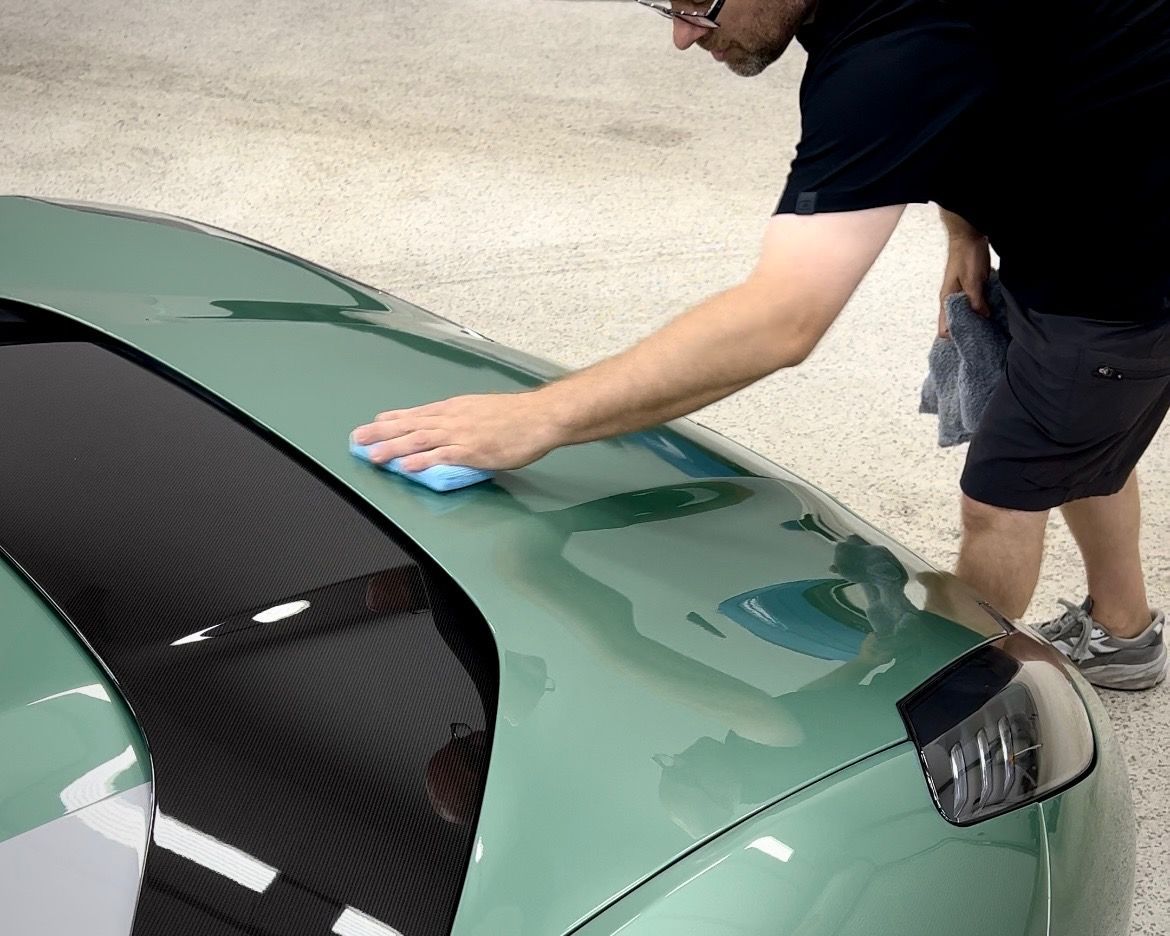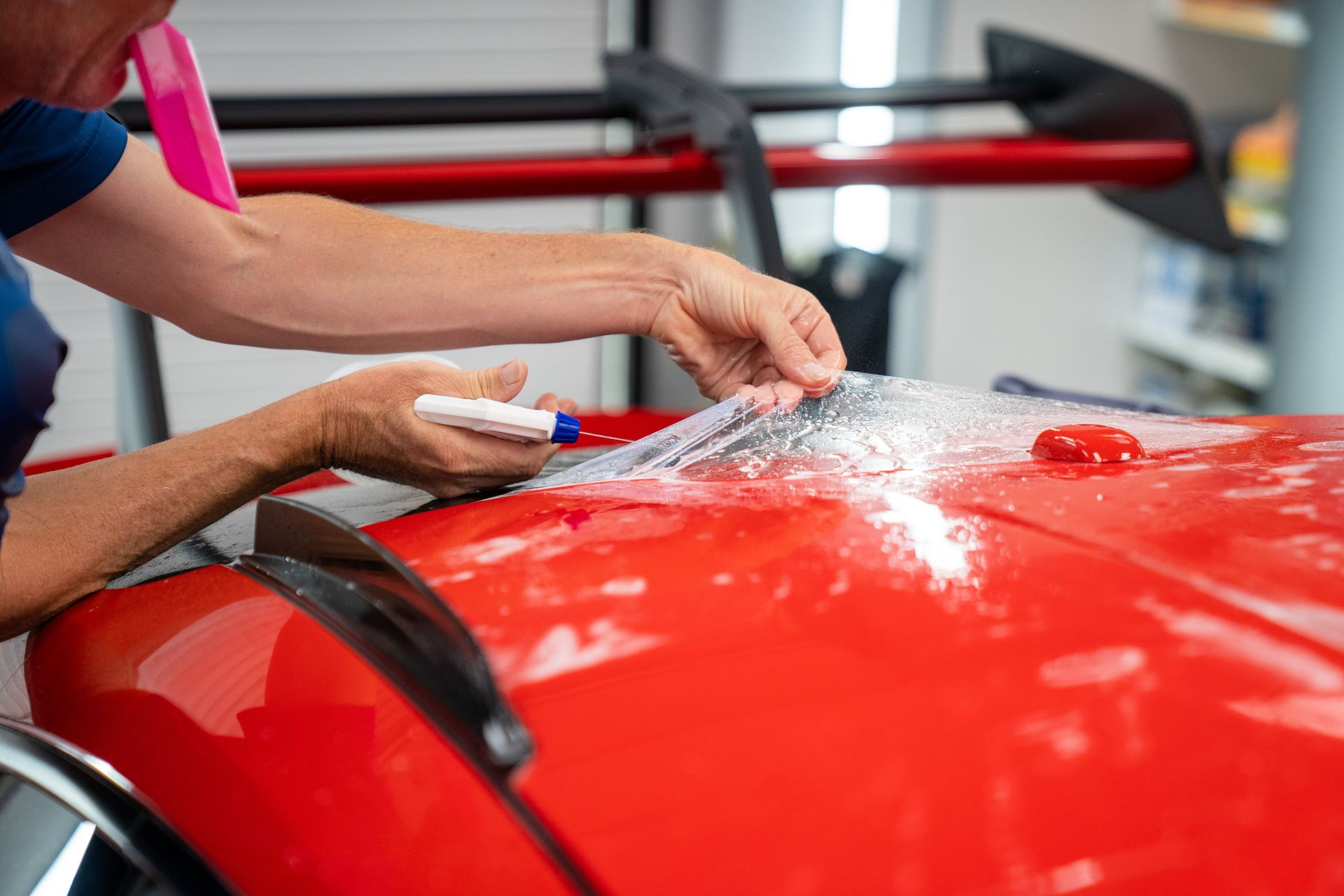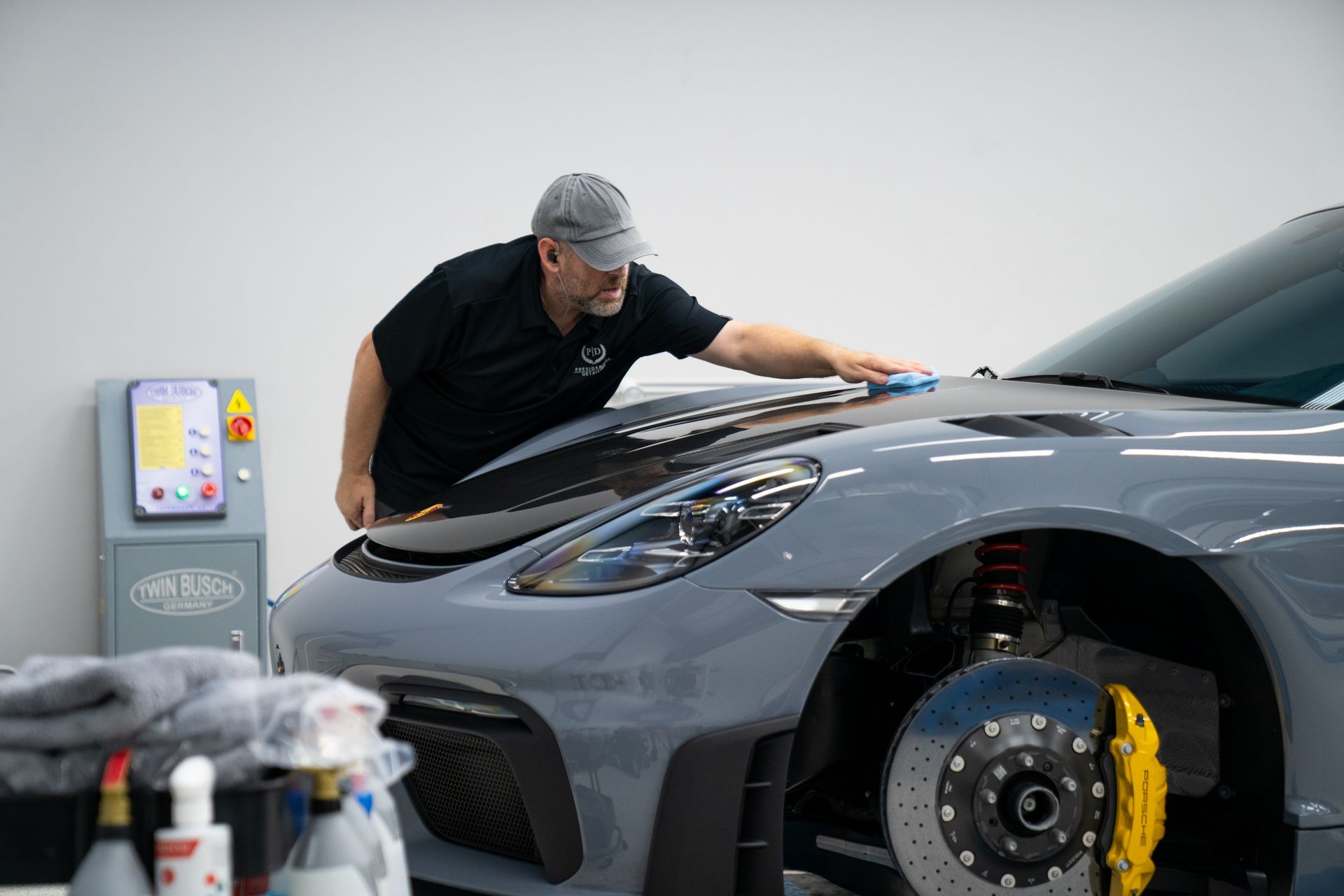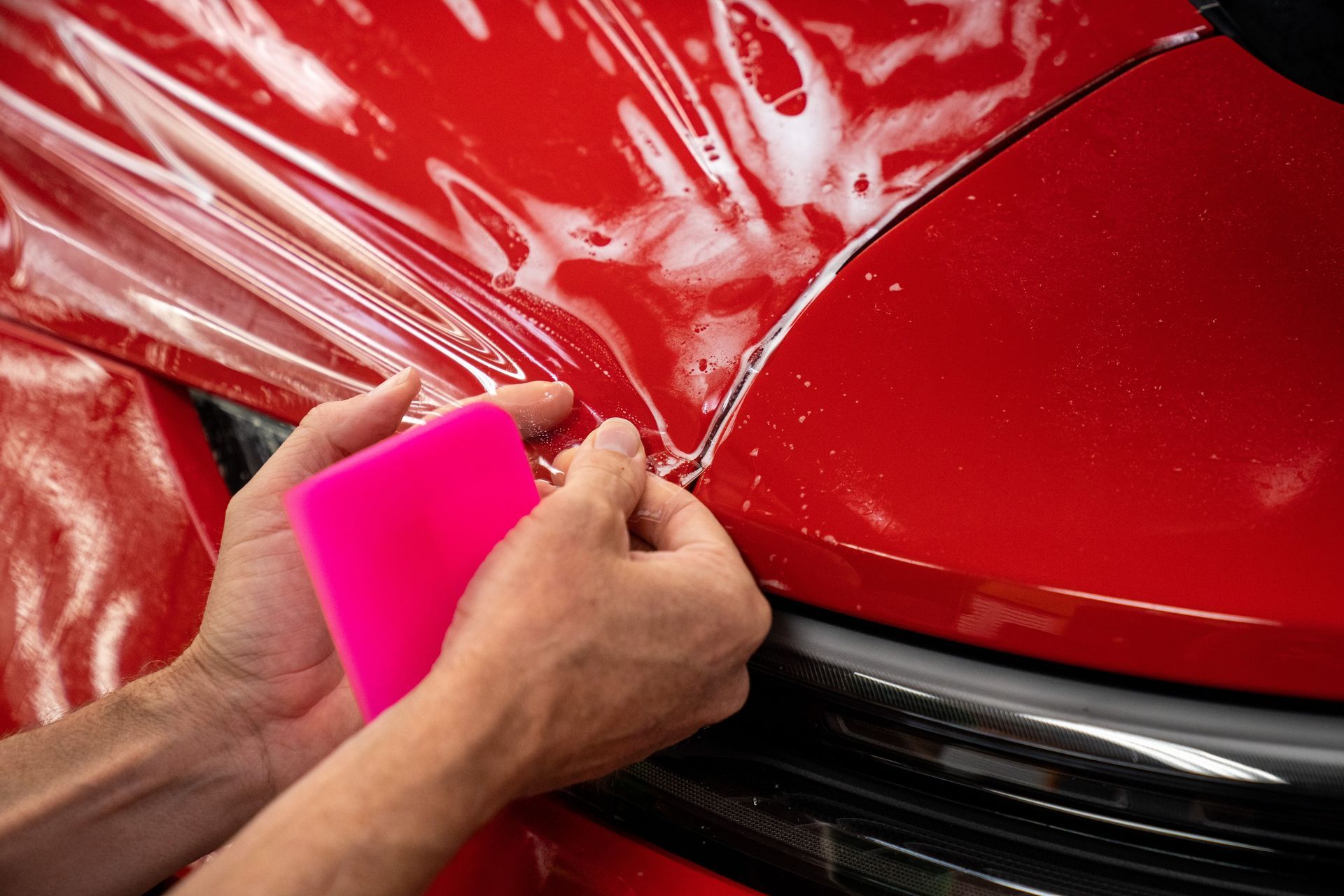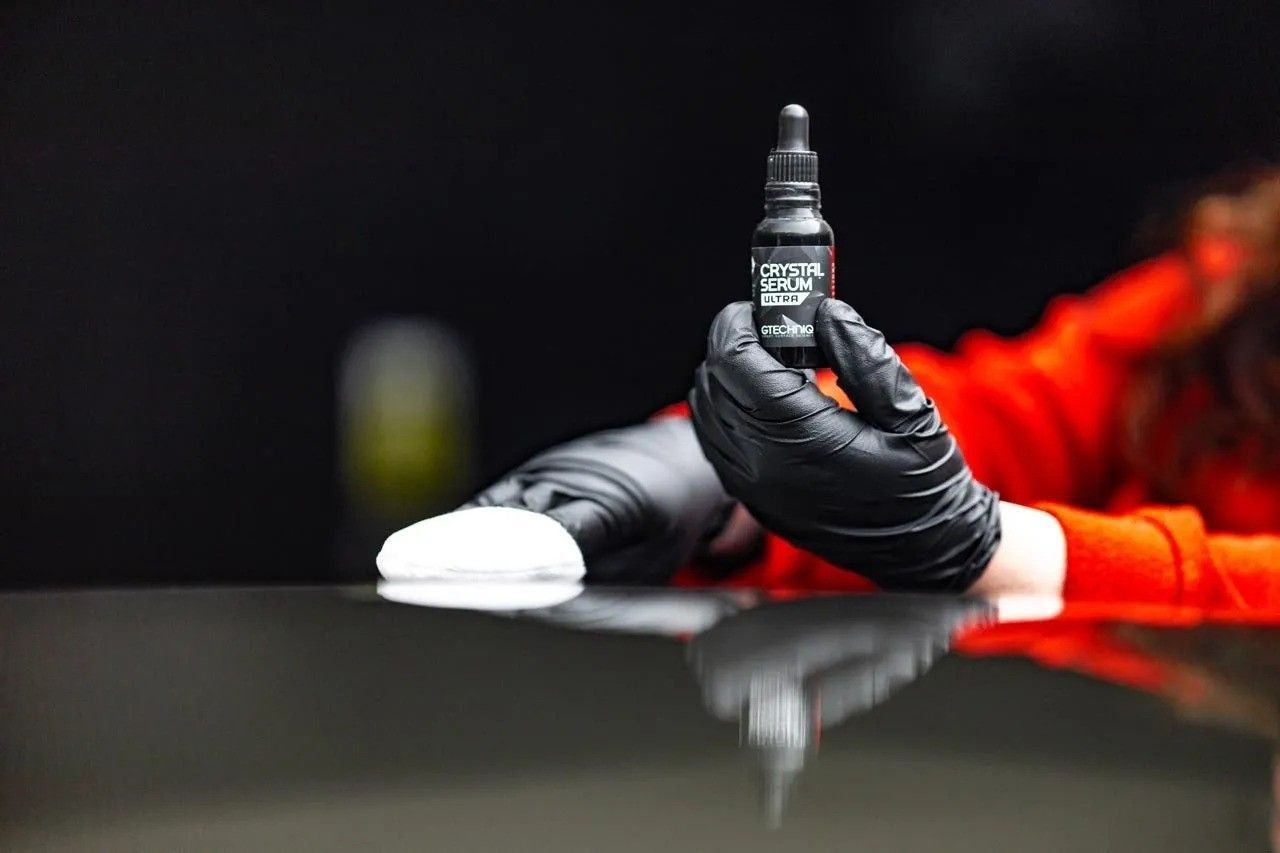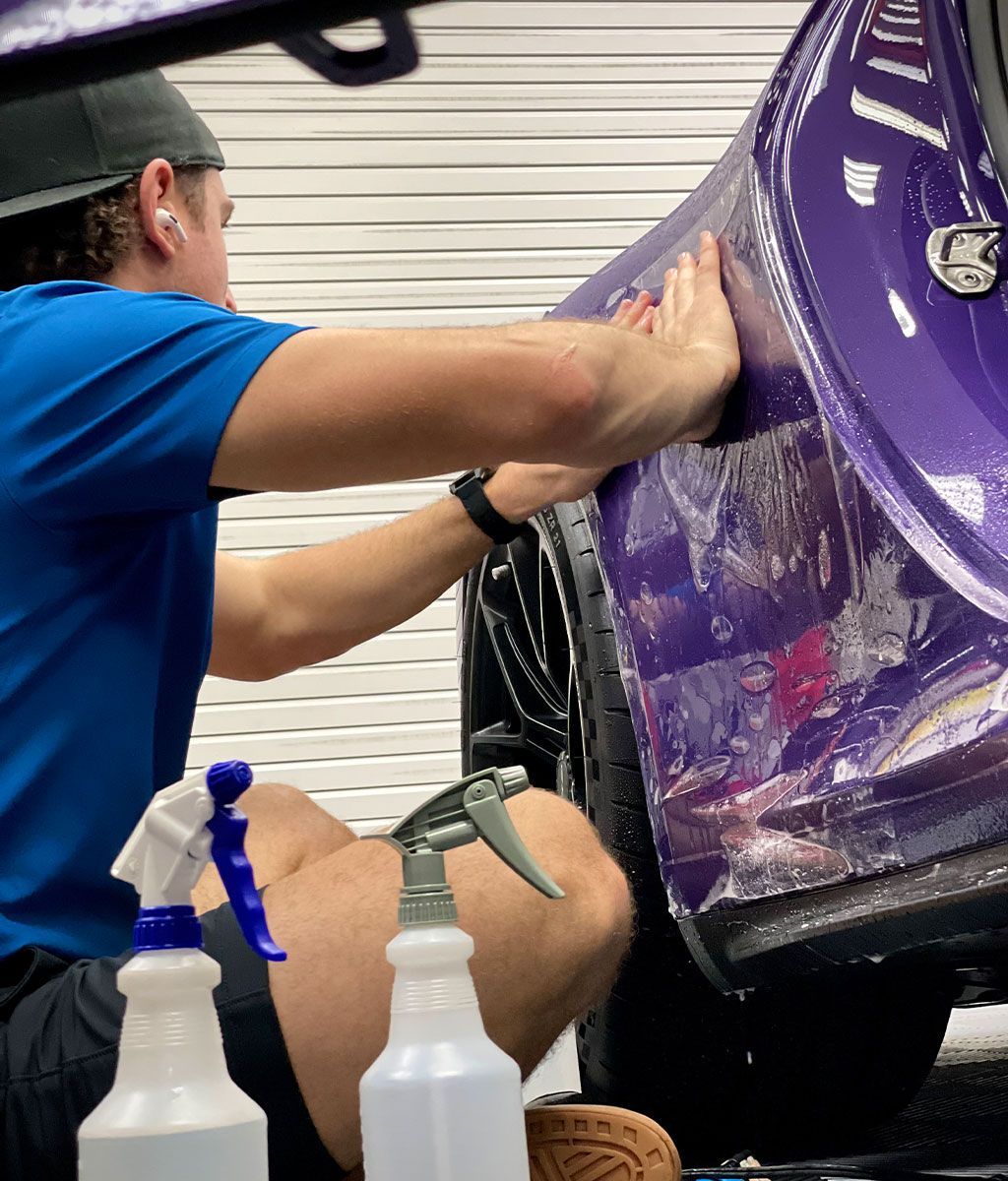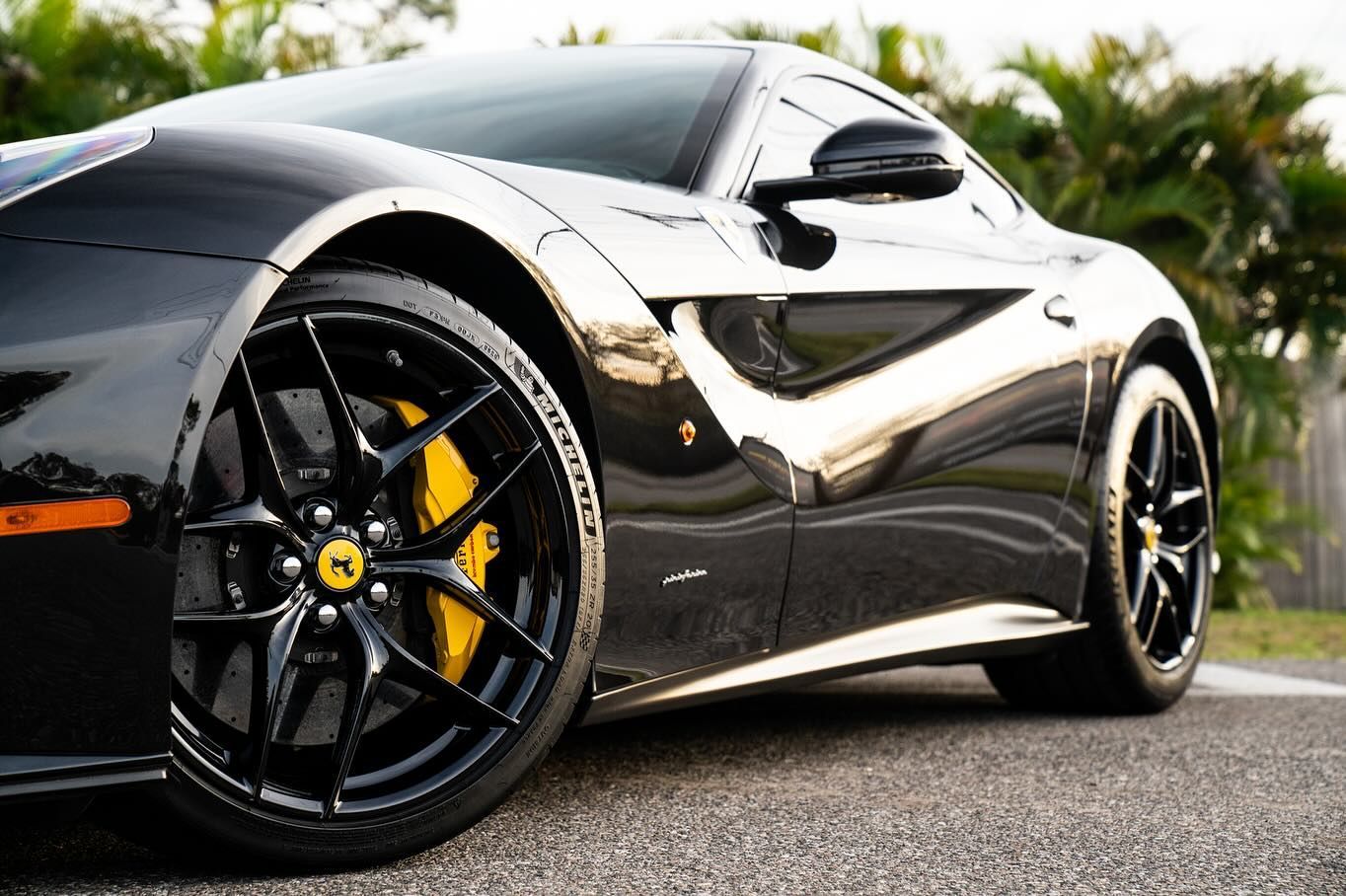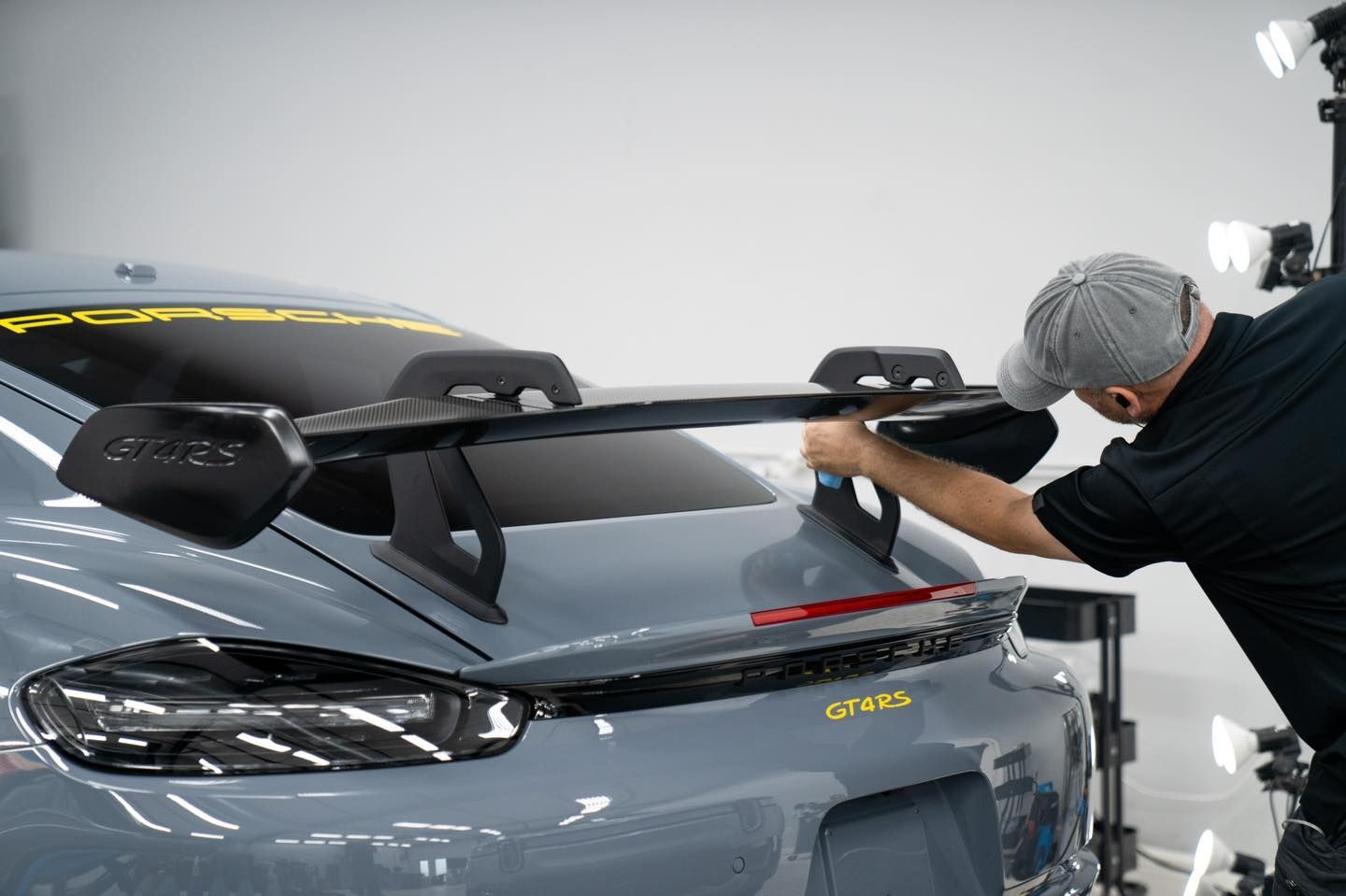Enhancing Car Aesthetics with Ceramic Coating: Ultimate Protection and Shine
CALL (813) 723-9679
GET A FREE ESTIMATECeramic coating is a liquid shield that dresses up your car in an invisible yet robust armor. It's not just some glossy layer; it fights off harmful elements like UV rays and chemical pollutants with ease, keeping your car's skin looking new. But there's more—it repels water too! Imagine those raindrops dancing away from your car's surface without leaving a trace, as if invisible hands were constantly cleaning it. No more excessive waxing or polishing; your ride stays bright with less effort.
A key tip for enhancing your car's aesthetics with ceramic coating is to ensure thorough surface preparation before application. This includes paint correction, if necessary, to achieve an optimal surface condition. Additionally, choosing a high-quality ceramic coating product and proper application using applicator pads or microfiber towels can contribute to achieving a glossy finish and long-lasting protection for your vehicle.
Essential Features of Ceramic Coatings
Ceramic coatings are like a shield for your car, creating a defensive layer that stands up against various environmental hazards. These coatings are designed to be tough and long-lasting, providing protection against UV rays, chemicals, and other contaminants that can degrade your car's paint over time. They form a chemical bond with the surface of your vehicle, making them more reliable than traditional wax or sealant. It acts as a force field for your car, fending off dirt, bird droppings, tree sap, and other environmental contaminants that occur during regular use. This protective layer doesn't just sit on top of the paint; it chemically bonds to the surface, creating an exceptionally strong and durable barrier. This means that the original finish of your car is maintained, reducing the need for frequent waxing or polishing.
Instead of spending hours waxing and polishing your car every couple of months to restore that glossy finish, you could have a ceramic coating applied once and enjoy the benefits for several years without much additional maintenance. These coatings not only save you time and effort on maintenance but also help preserve the glossy appearance of your vehicle for longer periods of time.
Benefits: Protection and Aesthetics
Ceramic coatings offer a two-pronged advantage, acting as a shield against environmental damage while enhancing the overall appearance of your vehicle. Let's delve into these benefits in detail.
- Superior Protection: When it comes to safeguarding your vehicle's paintwork, ceramic coatings stand out. They form a strong, resilient layer that shields the exterior against a multitude of environmental aggressors. By doing so, they significantly reduce the risk of paint oxidation, fading, and etching from contaminants like bird droppings or tree sap. This is particularly crucial given the harsh elements that vehicles are exposed to on a daily basis. Imagine your vehicle navigating through highways under the scorching sun or parked outdoors amidst unpredictable weather conditions. It's in these challenging environments that the ceramic coating proves its mettle, serving as an armor to defend against the detrimental effects of UV radiation, acidic substances, and other airborne contaminants. Essentially, it’s like giving your car a 24/7 bodyguard that shields it from potential harm.
- Enhanced Aesthetics: It's not just about protection; ceramic coatings elevate the visual appeal of your vehicle too. By creating a glossy, reflective surface, they intensify the depth of the paintwork, providing a professional sheen and a showroom-like finish. The result is an unparalleled level of luster that catches the eye and exudes a sense of luxury and sophistication. This transformative effect enhances the overall aesthetics of your vehicle, making it look as good as new for an extended period of time. Picture your vehicle gleaming under the sunlight—its surface radiating a mirror-like shine that captivates attention. This enhanced aesthetic isn't merely superficial; it reflects the meticulous care and attention to detail you've invested in preserving and elevating your car's appearance. Along with its protective qualities, the glossy finish that the ceramic coating offers emphasizes how crucial it is to maintain your vehicle's aesthetic appeal in addition to its functionality.
The synergy between protection and aesthetics forms the cornerstone of ceramic coating's allure, offering a dual benefit that caters to both pragmatic concerns and visual appeal. Whether it's shielding your car from environmental hazards or accentuating its sleek design, ceramic coatings impeccably fulfill these diverse needs, ensuring that your vehicle maintains its pristine condition while exuding a captivating radiance.
Types of Ceramic Coatings for Vehicles in SARASOTA, Florida
When it comes to ceramic coatings for cars, there are generally two distinct categories: professional-grade and consumer-grade coatings. Each type holds its own unique set of advantages and is suited for different car owners based on their needs and preferences.
Professional-Grade Coatings: Professional-grade ceramic coatings are typically applied by trained technicians who have the expertise to ensure precise application and optimum results. These coatings are known for their exceptional durability and longevity, offering a higher level of protection compared to consumer-grade options. The application process for professional-grade coatings often involves specific surface preparation to ensure a strong bond with the paint, as well as meticulous curing procedures to achieve the desired performance. The high level of expertise required to apply these coatings contributes to their cost, making them a significant investment.
Consumer-Grade Coatings: On the other hand, consumer-grade ceramic coatings are designed to be user-friendly, catering to car enthusiasts who prefer the convenience of at-home application. These coatings are formulated to offer moderate protection against environmental elements while maintaining ease of use for DIY applications. For individuals who take pride in maintaining their cars themselves, consumer-grade ceramic coatings provide an opportunity to enhance their vehicle's appearance and protection without having to rely on professional application services.
Techniques to Maintain Ceramic Coating
Keeping your car's ceramic coating in top condition is crucial for maintaining its protective and glossy qualities. Here are some key techniques to help you preserve the benefits of your ceramic coating.
- Proper Washing: To maintain a ceramic-coated vehicle, always use pH-neutral car wash soaps to prevent stripping the coating. These gentle shampoos effectively clean the surface without compromising the protective layer. Additionally, employing the two-bucket washing method is crucial for minimizing the risk of swirl marks. The two-bucket washing method serves as an extra precaution, preventing any dirt or grime from finding its way back onto your car's surface, thus upholding the integrity of the ceramic coating.
- Drying Methods: Once you've washed your car, drying it correctly is just as vital. To prevent scratches and water spots during drying, always use soft microfiber towels. The soft touch of microfiber towels ensures that every drying session is akin to a comforting embrace for your car's surface—gentle and loving, yet simultaneously effective in preserving its flawless appearance.
- Periodic Inspection: Regularly inspect the coating for any signs of wear or reduced hydrophobic properties. Over time, environmental factors and normal wear may lead to a decrease in water beading properties—a key indication that it's time for a spot treatment. It's akin to caring for a well-loved garden; periodic inspections guarantee that every flower bed remains vibrant and healthy. Just as a vigilant gardener tends to each plant, providing nourishment where required, inspecting your ceramic coated vehicle allows for targeted care and maintenance at crucial moments.
By nurturing these techniques routinely, you can ensure that your ceramic coating remains resilient against environmental factors while retaining its stunning appearance. Remember, the key lies in consistent upkeep to preserve the long-term benefits of this exceptional protective treatment.
Potential Drawbacks of Ceramic Coatings
Ceramic coatings are fantastic, but like anything else, they have their limitations. Here are a few factors to keep in mind when considering ceramic coating for your car:
Professional Installation Costs
When opting for professional-grade ceramic coatings, it's vital to be aware that the process involves intricate surface preparation and paint correction. As a result, the costs can be higher compared to other types of coatings or waxes. However, it's important to note that the initial financial commitment generally offers extensive protection, enhancing the overall lifespan and aesthetic appeal of your vehicle's paint. It's similar to providing top-tier treatment for your car's skin, ensuring long-term benefits for its appearance and vitality.
Loss of Hydrophobic Properties
Despite their exceptional qualities, ceramic coatings may experience a decline in their water-repelling abilities over time. This is particularly true if the maintenance of the coating is not handled properly or if aggressive cleaning chemicals are used. While it's normal for any protective product to undergo wear and tear, being aware of these limitations enables car owners to make informed decisions about how to care for their ceramic-coated vehicles.
Understanding these potential drawbacks allows car owners to fully consider all aspects before choosing a ceramic coating. It's vital to weigh the benefits against the potential disadvantages so that an informed decision can be made about whether ceramic coating is the right choice for one's vehicle. By acknowledging both the strengths and limitations of ceramic coatings, car owners can ensure they are making a well-informed investment in their vehicle's maintenance and aesthetics.
Exceptional Ceramic Coating Services in Sarasota, FL
Unleash the full potential of your car's shine with Presidential Automotive Detailing, your premier destination for exceptional ceramic coating services in Sarasota, FL. Our team of expert detailers is committed to enhancing and protecting your vehicle's finish with our advanced ceramic coating treatments. From providing an unmatched glossy finish to forming a robust shield against environmental contaminants, our ceramic coatings go beyond traditional waxing, ensuring long-lasting brilliance and defense. Elevate your car's aesthetics while simplifying maintenance. Choose Presidential Automotive Detailing for an unparalleled ceramic coating experience. Transform your vehicle into a gleaming masterpiece—schedule your appointment today or call us at
(813) 723-9679 and let us redefine automotive excellence in Sarasota!
